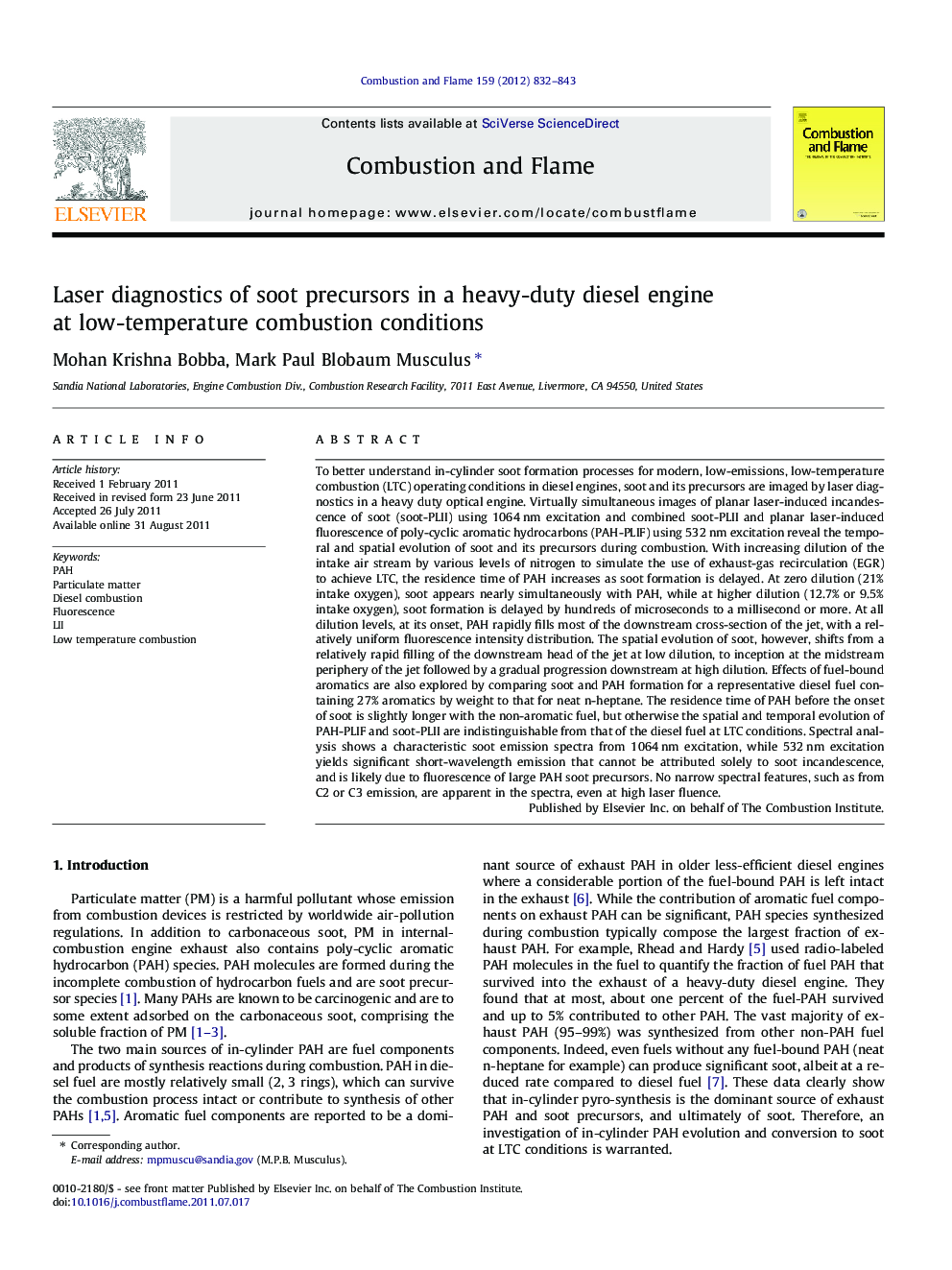| کد مقاله | کد نشریه | سال انتشار | مقاله انگلیسی | نسخه تمام متن |
|---|---|---|---|---|
| 167283 | 457849 | 2012 | 12 صفحه PDF | دانلود رایگان |

To better understand in-cylinder soot formation processes for modern, low-emissions, low-temperature combustion (LTC) operating conditions in diesel engines, soot and its precursors are imaged by laser diagnostics in a heavy duty optical engine. Virtually simultaneous images of planar laser-induced incandescence of soot (soot-PLII) using 1064 nm excitation and combined soot-PLII and planar laser-induced fluorescence of poly-cyclic aromatic hydrocarbons (PAH-PLIF) using 532 nm excitation reveal the temporal and spatial evolution of soot and its precursors during combustion. With increasing dilution of the intake air stream by various levels of nitrogen to simulate the use of exhaust-gas recirculation (EGR) to achieve LTC, the residence time of PAH increases as soot formation is delayed. At zero dilution (21% intake oxygen), soot appears nearly simultaneously with PAH, while at higher dilution (12.7% or 9.5% intake oxygen), soot formation is delayed by hundreds of microseconds to a millisecond or more. At all dilution levels, at its onset, PAH rapidly fills most of the downstream cross-section of the jet, with a relatively uniform fluorescence intensity distribution. The spatial evolution of soot, however, shifts from a relatively rapid filling of the downstream head of the jet at low dilution, to inception at the midstream periphery of the jet followed by a gradual progression downstream at high dilution. Effects of fuel-bound aromatics are also explored by comparing soot and PAH formation for a representative diesel fuel containing 27% aromatics by weight to that for neat n-heptane. The residence time of PAH before the onset of soot is slightly longer with the non-aromatic fuel, but otherwise the spatial and temporal evolution of PAH-PLIF and soot-PLII are indistinguishable from that of the diesel fuel at LTC conditions. Spectral analysis shows a characteristic soot emission spectra from 1064 nm excitation, while 532 nm excitation yields significant short-wavelength emission that cannot be attributed solely to soot incandescence, and is likely due to fluorescence of large PAH soot precursors. No narrow spectral features, such as from C2 or C3 emission, are apparent in the spectra, even at high laser fluence.
Journal: Combustion and Flame - Volume 159, Issue 2, February 2012, Pages 832–843